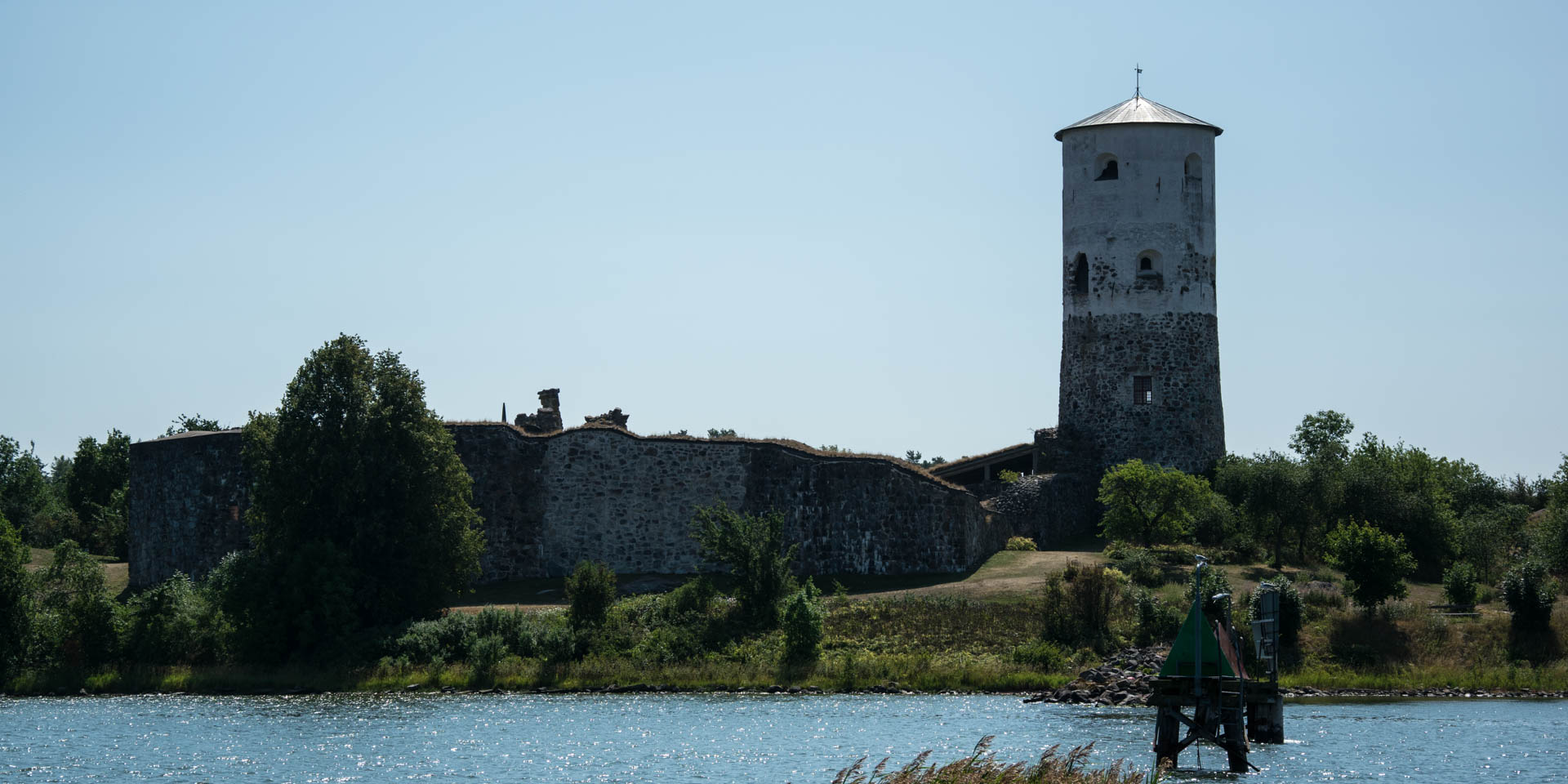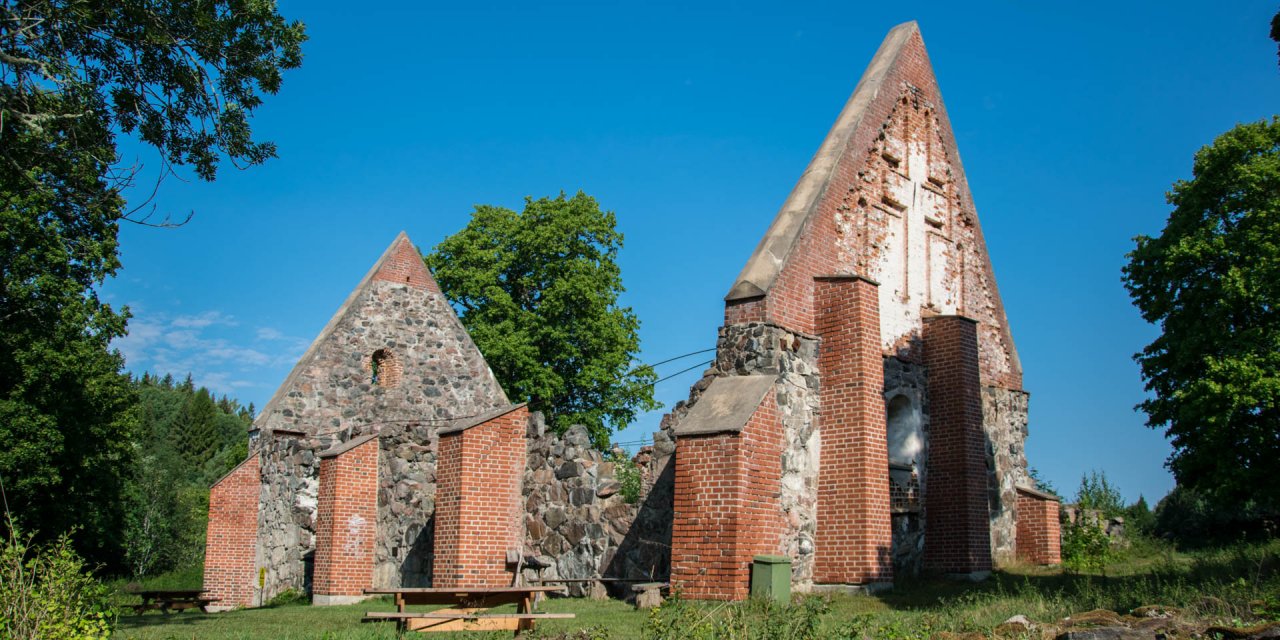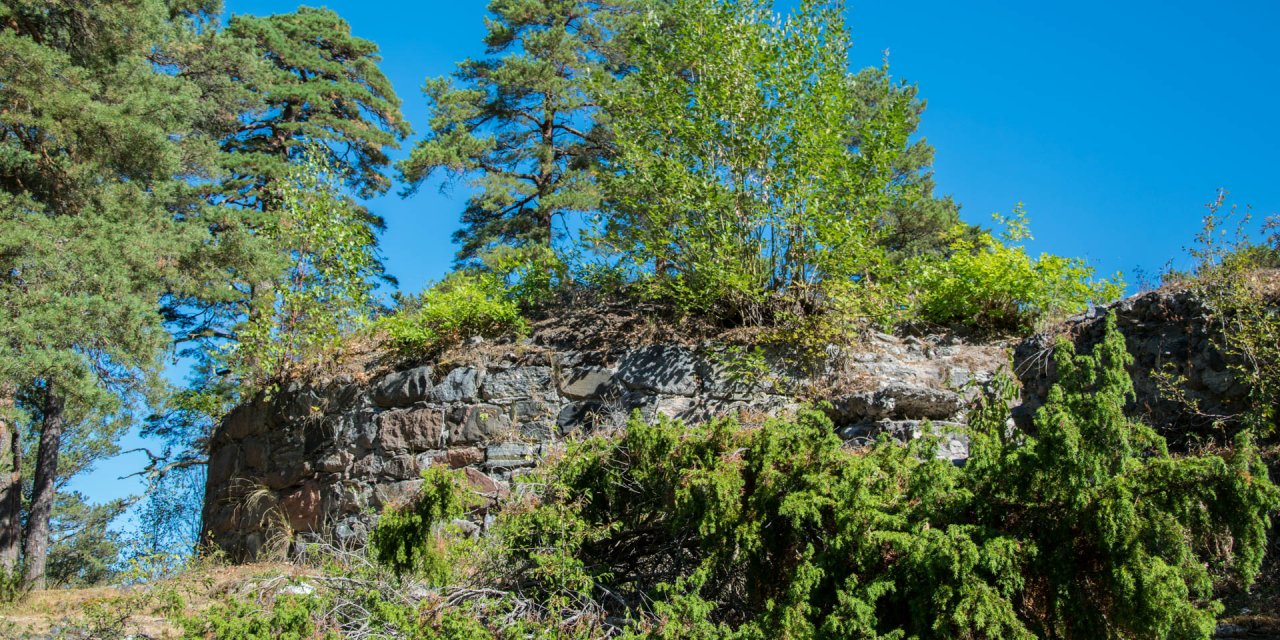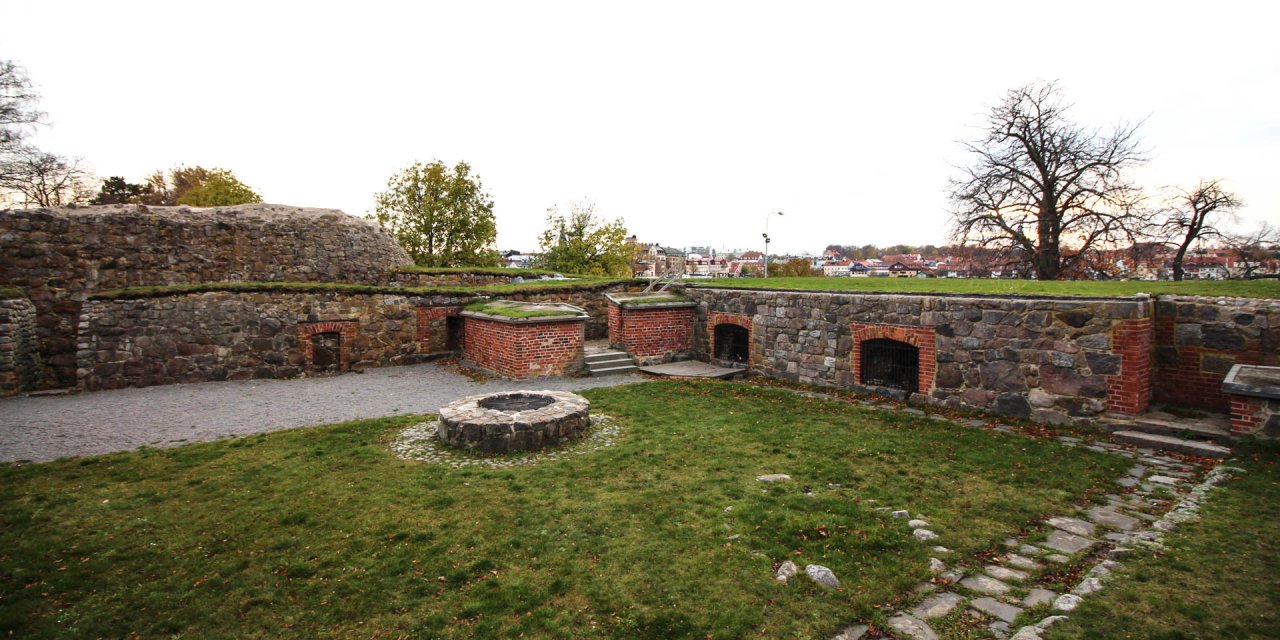

Stegeborgs Slottsruin
Medieval castle ruin in Stegeborg
Stegeborgs Slottsruin, the ruin of a 13th century castle, is located on a small island in the elongated fjord-like bay Slätbaken near Stegeborg, about 20 kilometres east of Söderköping.
The castle ruins of Stegeborg consist of partially demolished fortress walls, which almost completely enclose the large rectangular courtyard. On the inside of the castle walls, especially on the north and south sides are still parts of the masonry of the old castle buildings.
In the south-eastern corner of the castle wall is the lower part of the rectangular fortified tower from the early 12th century, which was the nucleus of the later fortress. The high, well preserved round tower on the west side of the castle, visible from afar, dates from the 14th century in its lower half. It received its present height during the last extension of the fortress at the end of the 16th century.
The ruin is surrounded by a park-like landscape in which there is also a pretty herb garden. Access to the Stegeborg is possible all year round for a small entrance fee. During the summer months from midsummer to mid-August, you can also borrow an audio guide in English with the exciting history of the castle from the opposite kiosk for an extra charge.
There are two ways to access the island – on the south side leads a short road bridge over to the mainland and on the north side, the island can be reached by the free car ferry from Norrkrog after a three-minute crossing. In the immediate vicinity of the ferry terminal in Norrkrog are the nature reserve Norrkrog and the sandy beach Stegeborgsgårdens Badplats.
The history of Stegeborg
In the Middle Ages Stegeborg was one of the most important fortresses in Sweden and remained a royal castle from the 16th century until the beginning of the 18th century after various alterations. The castle stands at the narrowest point of the approximately 18 kilometre long and narrow Slätbaken bay. In the Middle Ages it had the task to protect the sea route to Söderköping, which in the 13th and 14th centuries was one of Sweden's most important port cities and a centre of power on a level with Stockholm.
Due to the constantly changing balance of power in medieval Sweden, the fortress changed hands quite frequently during the first 300 years of its existence and was often the scene of bloody conflicts and tough negotiations among the most powerful of its time. Only with the establishment of the modern Swedish national state under King Gustav Vasa (1496–1560) the ownership situation stabilised. Gustav Vasa often resided on Stegeborg and one of his sons, the later King Johann III was born on the fortress and grew up there.
It was also Johann III who had Stegeborg extended from 1578 onwards in such a way that the fortress looked more like a Renaissance chateau than a medieval castle after the completion of construction work in 1590.
From 1689, the regional administration for the archipelago region in Östergötland was situated on Stegeborg. In the course of time, the costs for the maintenance of the large castle became so high that the royal administration sold Stegeborg for the purpose of demolition. In the summer of 1731 large parts of the castle were demolished and the stones were sold to Norrköping as building material for houses.
In particular, the lower parts of the fortress walls proved to be so resistant that their demolition became too costly and finally failed to take place. In 1901, the ruin was declared a state monument and was excavated between 1948 and 1955 under the direction of the Office for the Preservation of Historical Monuments.



